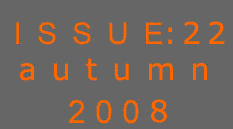

The Return of TopSafe
In the wake of the nuclear renaissance there has been increasing public interest in nuclear safety and increased activity in this field within the nuclear science community. The timing was, therefore, perfect when ENS recently organised the first TopSafe conference dedicated to the safety of nuclear installations for 10 years.
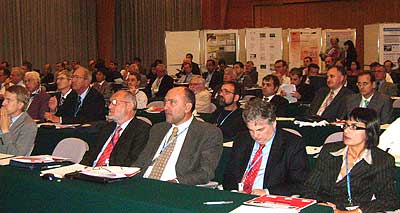
TopSafe 2008 was hosted by the Croatian Nuclear Society (HND) and held in the beautiful coastal resort of Dubrovnik, Croatia, from September 30 - October 3. Around 130 participants from 28 countries took part, representing the different sectors of the nuclear society - industry, regulatory bodies, International organisations, universities and research institutes.
The conference organisers and the programme committee should be congratulated for a very well planned and executed event. The social schedule included a Welcome Reception, coffee breaks on the terrace with an unforgettably beautiful view over the Adriatic Sea, lunch buffets in the hotel restaurant and a conference gala dinner with accompanying song and dance at the Town Café, in the harbour of the charming old town of Dubrovnik.
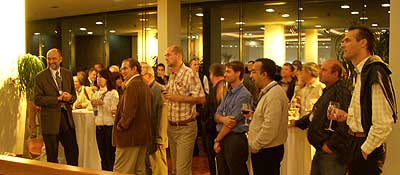
Almost 100 technical papers were presented during three intensive days. The presentations and posters were divided into the eight categories: Safety Assessment and Analysis, Licensing and Harmonization, Operational Safety, Fuel Cycle Safety, Design and Safety Issues, Safety of Forthcoming Reactors, Safety of Future Reactor Designs and Research Reactors. The poster session was innovatively introduced by a poster session panel, commenting all posters and providing a good overview of the projects. This also provided a good starting point for further discussions with the various authors.
In addition, seven invited lecturers presented their views on current topics of fundamental interest to delegates. A brief summary of the conference, including some general observations, is given below. Full proceedings are available at the TopSafe 2008 web site. Also ENS’ newly inaugurated scientific advisory body, the High Scientific Council, have announced that they will publish a position paper on the conference.
In the sessions on Safety Assessment and Analysis the presentations emphasised the prevailing trend towards more advanced simulation tools, such as 3D coupled core-plant codes and CFD applications, which help provide the best possible estimations. In support of the introduction of the so-called “Best Estimate Plus Uncertainty (BEPU)” methods, a few papers also dealt with ways of handling and determining “uncertainties.” One example of this was presented by NEA. It is the LWR Uncertainty Analysis of Modelling (UAM) Benchmark, the objective of which is to determine the uncertainties and their propagation in all steps of a LWR coupled neutronics-thermal hydraulics calculation – an ambitious and long-term goal.
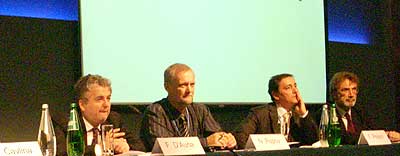
Another area of safety assessment where huge research efforts are being made is that of severe accidents. Most notable in this respect is the international collaboration planned under the aegis of SARNET-2, the second phase of the Severe Accident Research Network, which is dedicated to resolving issues related to the consequences of core meltdown for the enhancement of safety at existing and future nuclear power plants.
Finally, a particularly interesting and important comment was made during the closing panel session, namely that the industry is not making full use of the progress accomplished by research in modelling and experiments due to unsatisfactory interconnections between the industry and research sectors.
Another area where major international initiatives are underway is that of the harmonisation of nuclear safety standards and regulations, which was well covered at the conference.
Such harmonisation is generally recognised as being a prerequisite for allowing the standardisation of future reactor designs necessary to hep maintain the nuclear renaissance.
The IAEA presented their plans for new or updated safety standards governing generic NPP designs and new security standards. At the same time, regulatory bodies in the EU countries are working together within WENRA (the Western Europe Nuclear Regulators Association) to benchmark their requirements and reach a level where no substantial differences in regulatory requirements and their implementation remain between countries. As a counterpart to WENRA, and to support this objective, the European nuclear power utilities have formed ENISS (the European Nuclear Installations Safety Standards initiative), which was also presented at the conference.
For the regulation of new reactor designs, NEA have started a Multinational Design Evaluation Programme (MDEP) to increase co-operation between regulators in different countries in this field. Requirements have also been outlined in the European Utility Requirement document (EUR). So, there are a lot of parallel activities keeping track of all that’s new in the field of regulatory affairs. In addition to harmonisation and new reactor designs, another key topic for regulators today is how to approach the increasing use of BEPU methods in license applications. This subject too was discussed during the conference.
Some controversy occurred during the discussions on operational safety, more specifically with regards to operational experience feedback. As the EC-JRC (European Commission’s Joint Research Center) presented its “Clearinghouse Project” for supporting regulators in the assessment of operational events, it was strongly questioned by representatives from the regulatory bodies why WANO’s event reporting system could not be taken advantage of and why this data base was kept confidential. From a WANO utilities’ perspective it was argued that this would threaten the transparency and alertness, and be counter-productive for safety if the event reports were released to the public. It was further argued that public event reporting needs to provide appropriate event analysis that enhances a good understanding of what has gone wrong and of what needs to be done. This is not always the case when events are initially reported to WANO.

While operating experience feedback was discussed in some detail, safety culture was identified as an issue that received insufficient attention at the conference. In this area a lot of interest was given to Electrabel’s presentation on its innovative training programme and facility for improving safety culture for nuclear power plant personnel - an initiative that has already been adopted by a number of utilities in Europe.
Only a few presentations focused fuel cycle safety, which might seem like a bit of an imbalance in the conference programme considering the high level, of interest that this aspect of nuclear safety generates in the public. However, there was, for example, an interesting contribution from AREVA on their development in the field of criticality safety analysis and also a short paper submitted by AREVA’s on its risk analyses for optimising transport security.
Among the design and safety Issues that were discussed at the conference, the use of probabilistic safety assessment during the design phase of new reactors, such as the Finnish EPR OL-3, deserves special mention as it represents the state-of-the-art in evolutionary reactor designs. Issues that were not so well covered during the conference were those related to material safety and ageing, which can be expected to be a growing problem for the ageing reactor fleet. This problem area has drawn a lot of attention in Japan after a number of serious events linked to material degradation have occurred recently and a lot of research activities are on-going there. Another interesting but more specific type of design issue featured at the conference was the safety improvement plan conceived for the completion and start-up of the Slovakian Mochovce Units 3 and 4, which was presented by the plant’s new owners, ENEL.
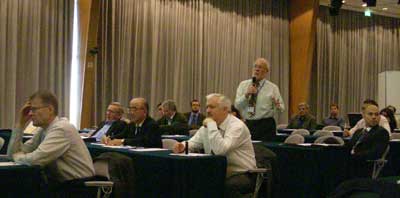
The future reactors that were presented at the conference included AREVA’s EPR (PWR) and SWR1000 (BWR), Westinghouse’s AP1000 (PWR) and AECL’s ACR-1000 (CANDU). Considering the considerable similarities between Westinghouse’s and AREVA’s generation III PWR’s, it is interesting to see how different their generation III+ PWR concepts are.
The EPR is an evolutionary design relatively similar to that in existing plants, but with an improved defence-in-depth system against accidents occurring and for the mitigation of the consequences of severe accidents. The development of the AP1000, on the other hand, has been directed by EPRI’s Utility Requirement Document (URD), emphasising simplification of design and passive safety systems. Just looking at the significant reduction of building volumes and components with the AP1000, one could guess that the capital cost would be considerably lower than that of the EPR. However, this may, on the other hand, well be counterbalanced by the considerably higher electricity output of the EPR – 1600 MWe as compared to 1100 MWe for the AP1000. While AREVA was first out with the start of construction of the two EPR’s in Olkiluoto and Flamanville and preparations for new-builds in China well underway, Westinghouse now seem to be gaining ground with the start of the construction of the first of four AP1000 ordered from China at the beginning of 2009. Several additional orders have also been placed in the US. So, it’s looking to be a close race between these two fundamentally different alternatives – and, not to forget, a long list of other challenging new designs.
I was not able to attend the sessions on research reactors and safety of future reactor designs much and cannot, therefore, do them justice in this report. Concerning research reactors it was, however, evident that considerable work is being done to resolve safety issues that may persist at individual reactors and to make more detailed safety assessments. For example, efforts have been made, on the initiative of IAEA, to improve reliability input to the probabilistic safety assessment of research reactors. As far as future reactor designs of generation IV reactors are concerned, it was noted that a higher commitment from industry is required for the development, financing and research of these reactors. However, government support is also a key component. The country that seems to have advanced the most here is Japan, where both industry and government seem committed to have fast breeder reactors commercialised by 2050 that will account for the majority of nuclear generated electricity production in 2100.
As it was pointed out in the closing panel discussion, the TMI and Chernobyl incidents made us learn the lesson that we in the nuclear community are “all in the same boat”. The only way to ensure that there is the necessary level of nuclear safety at all plants is to encourage widespread co-operation and co-ordination between companies and institutions worldwide. TopSafe could serve an important purpose in facilitating and promoting such interaction. But for TopSafe to fully accomplish this, and to fulfil its ambition of covering all aspects of nuclear safety, the conference would have to expand to attract more participants representing all of the European nuclear society, as well as a critical mass of experts from the relevant competence bodies.
This year, other nuclear installations than power plants were not well represented. So were the utilities, as is often the case at this type of conference. Some criticisms from the research community were also noted regarding their representation at the conference. Nevertheless, the conference was a success and most participants seemed to agree with the call for increasing in the frequency of this event.
Petter Gabrielsson
Nuclear Design and Analysis, PWR (PBTP)
Vattenfall Nuclear Fuel AB
Tel: +46-8-73 955 20
Mob: +46-70-36 955 20
E-mail: petter.gabrielsson@vattenfall.com
|

